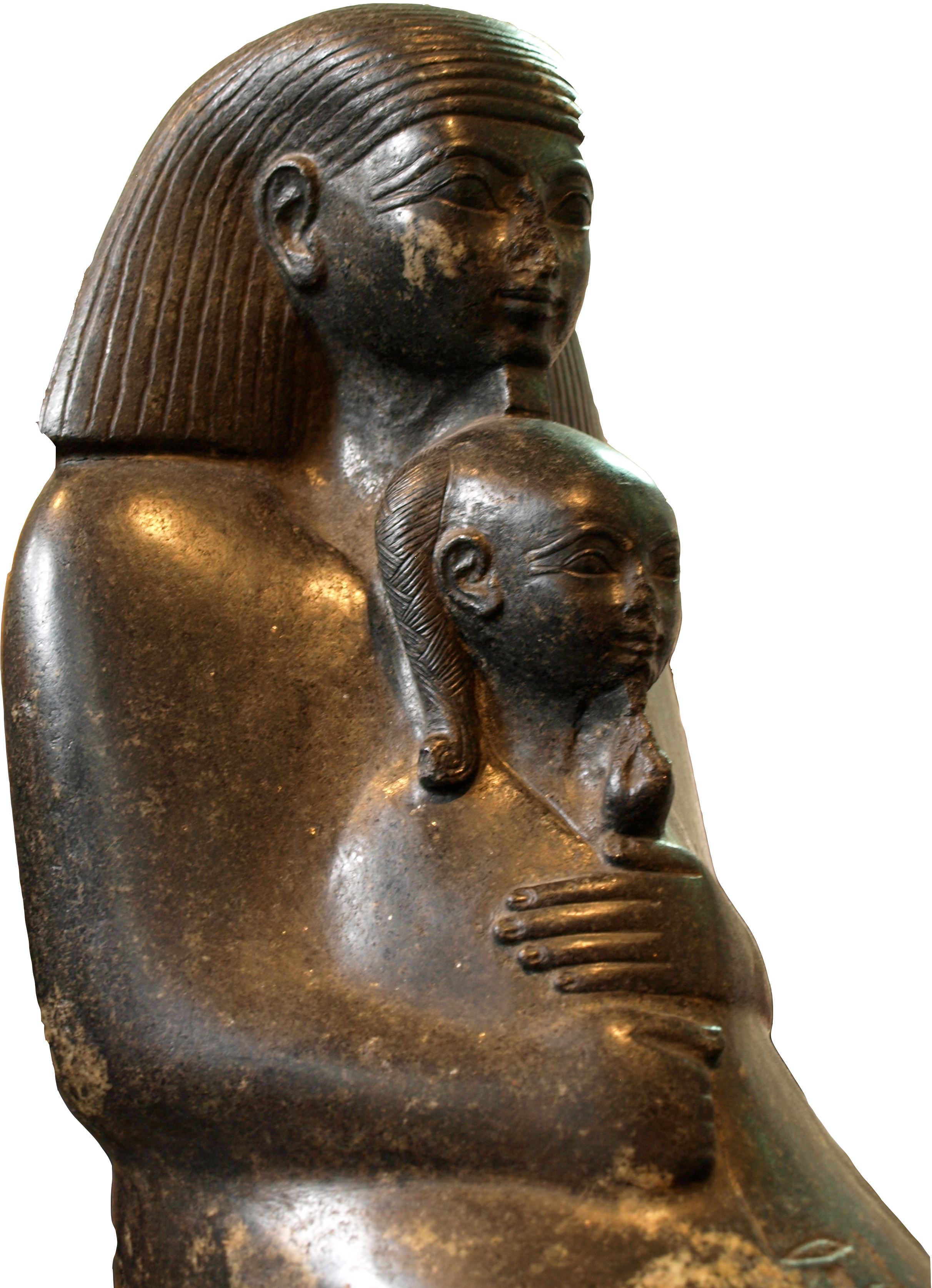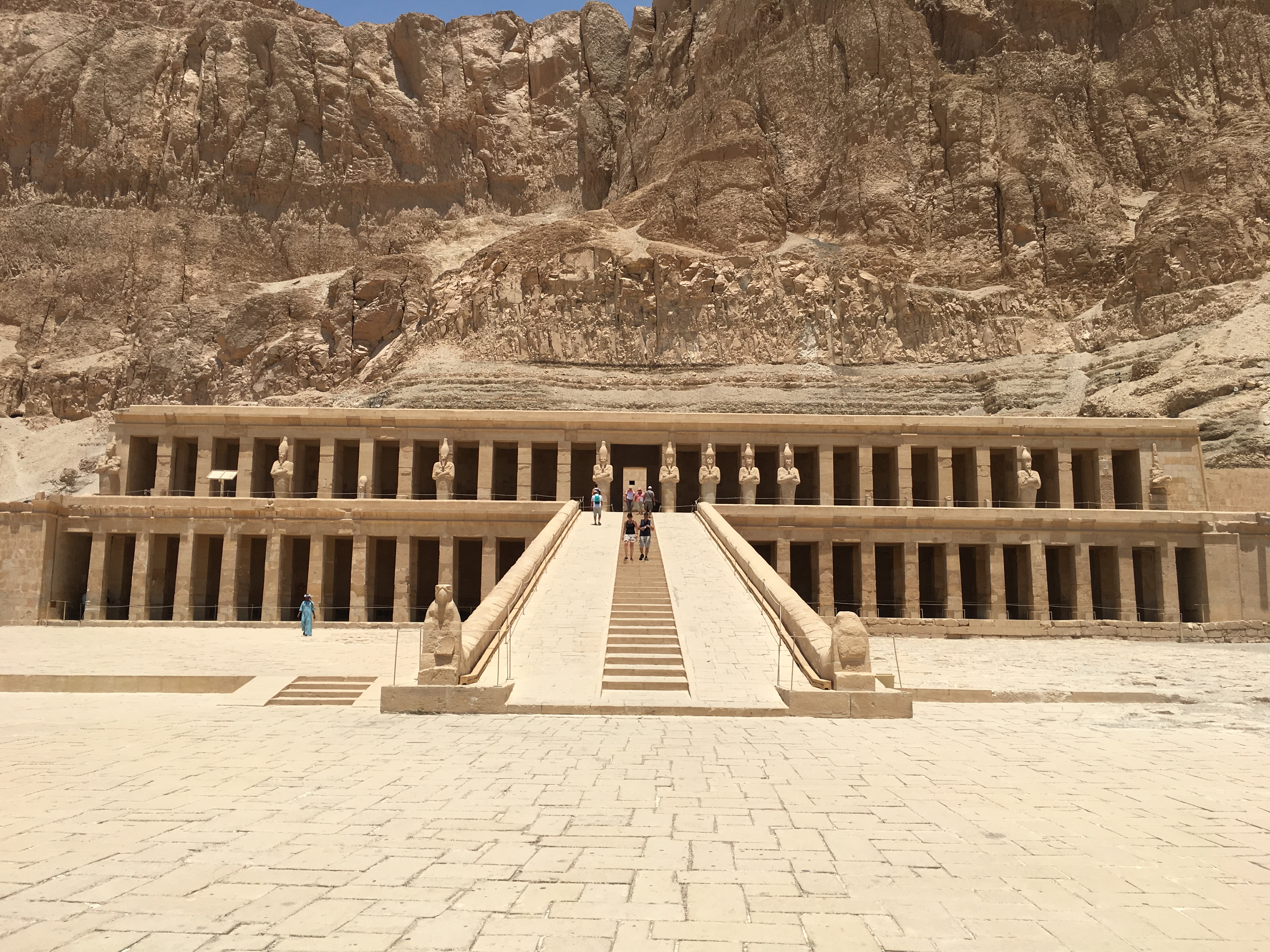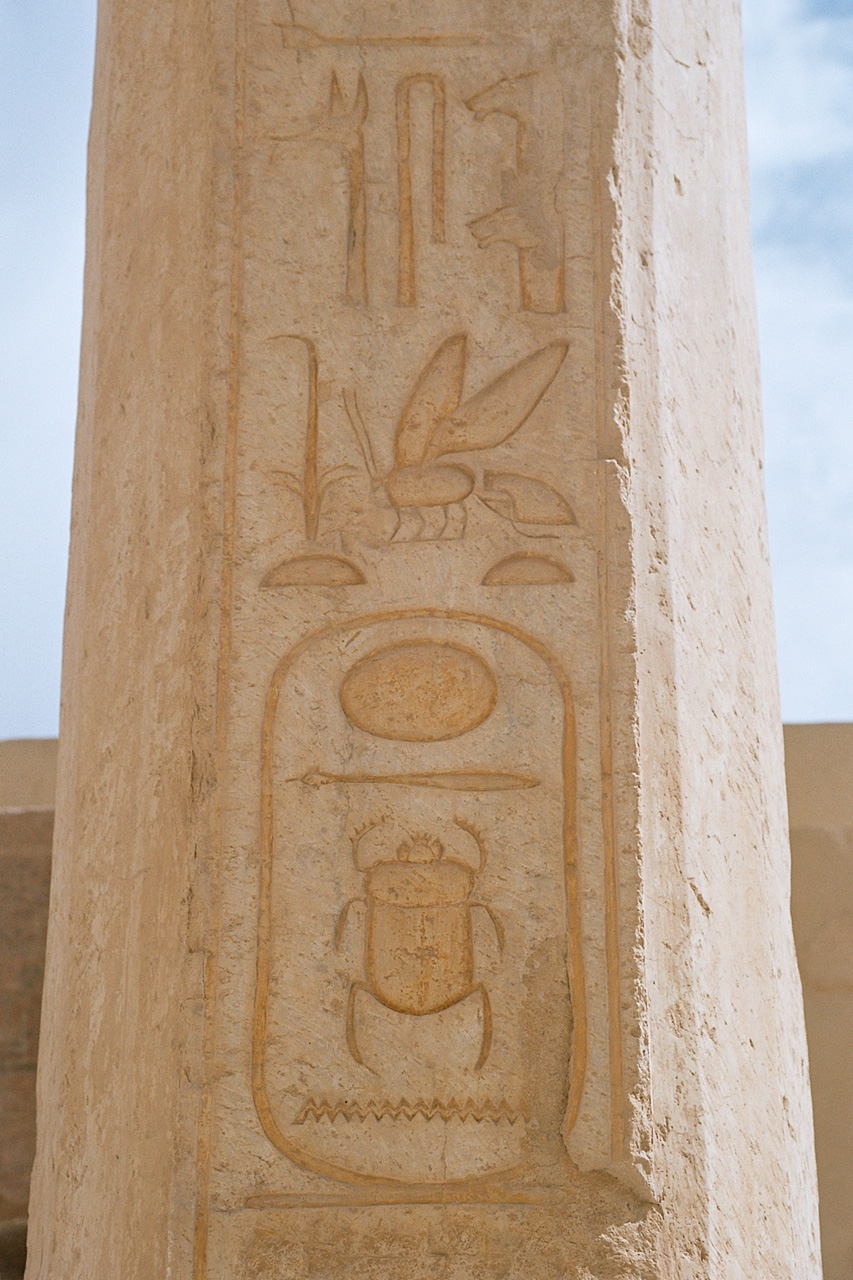|
Senimen
Senimen was an ancient Egyptian official who lived at the beginning of the 18th Dynasty and who was tutor of the king's daughter Neferure. The latter had an exceptionally high status under the ruling queen Hatshepsut (about 1507–1458 BC). Senimen is known from several sources. A funerary cone preserves a number of titles, that make it possible to reconstruct his career. On the cone he appears as ''child of the harem (kap) of Nebpehtyre''. Nebpehtyre is the throne name of king Ahmose. The title indicates that Senimen grew up under this king. On the cone, three further titles are listed. They all relate to his position as teacher or tutor of Neferure. Senimen was called ''teacher of the god's body of the god's wife Neferure'', ''nurse of the daughter of the god's wife Hatshepsut'' and ''steward of the king's daughter''. Senimen was evidently at one point in his career appointed to become the teacher of Neferure. He was also administrator of Neferure's domains. The timing of this ... [...More Info...] [...Related Items...] OR: [Wikipedia] [Google] [Baidu] |
Neferure
Neferure (or Neferura) was an Ancient Egypt, Egyptian princess of the Eighteenth Dynasty of Egypt. She was the daughter of two pharaohs, Hatshepsut and Thutmose II. She served in high offices in the government and the religious administration of Ancient Egypt. Family Neferure was the only known child of Thutmose II and his great royal wife Hatshepsut. She was the granddaughter of Thutmose I and the half-sister of Thutmose III. It has been suggested that Neferure married her half-brother, but there is no conclusive evidence of such a marriage. A king’s son named Amenemhat (son of Thutmose III), Amenemhat (B) was installed as Overseer of the Cattle in year 24 of the reign of Thutmose III, and this prince may have been a son of Neferure. It has been pointed out however, that if Neferure had become a great royal wife of Thutmose III, she would have been attested with that title, which is not known to be the case. Life Neferure was born during the reign of Thutmose II. In Karnak ... [...More Info...] [...Related Items...] OR: [Wikipedia] [Google] [Baidu] |
Hatshepsut
Hatshepsut (; also Hatchepsut; Egyptian: '' ḥꜣt- špswt'' "Foremost of Noble Ladies"; or Hatasu c. 1507–1458 BC) was the fifth pharaoh of the Eighteenth Dynasty of Egypt. She was the second historically confirmed female pharaoh, after Sobekneferu. (Various other women may have also ruled as pharaohs or at least regents before Hatshepsut, as early as Neithhotep around 1,600 years prior.) Hatshepsut came to the throne of Egypt in 1478 BC. As the principal wife of Thutmose II, Hatshepsut initially ruled as regent to Thutmose III, a son of Thutmose II by another wife and the first male heir. While Thutmose III had inherited the throne at about two years old, Hatshepsut continued to rule by asserting her lineage as the daughter and only child of Thutmose I and his primary wife, Ahmose. Her husband Thutmose II was the son of Thutmose I and a secondary wife named Mutnofret, who carried the title 'King's daughter' and was probably a child of Ahmose I. Hatshepsut and Thutmos ... [...More Info...] [...Related Items...] OR: [Wikipedia] [Google] [Baidu] |
Funerary Cone
Funerary cones were small cones made from clay that were used in ancient Egypt, almost exclusively in the Theban Necropolis. The items were placed over the entrance of the chapel of a tomb. Early examples have been found from the Eleventh Dynasty. However, they are generally undecorated. During the New Kingdom, the cones were smaller in size and inscribed in hieroglyphs with the title and name of the tomb owner, often with a short prayer. The exact purpose of the cones is unknown, but hypotheses exist that they variously served as passports, architectural features, and symbolic offerings, among others. Funerary cones were first organized into a corpus by Davies and Macadam (1957). This catalog was later supplemented by Vivo and Costa (1997). In the 21st century, Dibley and Lipkin (2009) and Zenihiro (2009) have compiled more complete publications, with Theis (2017) contributing additional cones from books, articles, auction and exhibition catalogues for consideration. See also * ... [...More Info...] [...Related Items...] OR: [Wikipedia] [Google] [Baidu] |
Ahmose I
Ahmose I ( egy, jꜥḥ ms(j .w), reconstructed /ʔaʕaħ'maːsjə/ ( MK), Egyptological pronunciation ''Ahmose'', sometimes written as ''Amosis'' or ''Aahmes'', meaning "Iah (the Moon) is born") was a pharaoh Pharaoh (, ; Egyptian: ''pr ꜥꜣ''; cop, , Pǝrro; Biblical Hebrew: ''Parʿō'') is the vernacular term often used by modern authors for the kings of ancient Egypt who ruled as monarchs from the First Dynasty (c. 3150 BC) until the an ... and founder of the Eighteenth Dynasty of Egypt, classified as the first dynasty of the New Kingdom of Egypt, the era in which ancient Egypt achieved the peak of its power. He was a member of the Thebes, Egypt, Theban royal house, the son of pharaoh Seqenenre Tao and brother of the last pharaoh of the Seventeenth Dynasty of Egypt, Seventeenth dynasty, Kamose. During the reign of his father or grandfather, Thebes rebelled against the Hyksos, the rulers of Lower Egypt. When he was seven years old, his father was killed,#Shaw ... [...More Info...] [...Related Items...] OR: [Wikipedia] [Google] [Baidu] |
Ahmose Pen-Nekhebet
The Autobiography of Ahmose Pen Nekhbet is a tomb inscription from ancient Egypt, which is significant to Egyptology studies. Ahmose Pen Nekhbet was an ancient Egyptian official who started his career under Ahmose I and served all the pharaohs until Thutmose III. His autobiographical inscriptions are important for the understanding of the history of the early New Kingdom, though less detailed than those of his contemporary Ahmose, son of Ebana. In his tomb he mentions his brother Khaemwaset and his wife Ipu, who may be identical with the royal nurse Ipu, mother of Queen Satiah. His tomb is located in Nekhen where it is given the designation EK2. Under Ahmose I he fought in Northern Canaan; then he followed Amenhotep I to Nubia, accompanied Thutmose I to Naharin, and campaigned with Thutmose II in Sinai. He held many offices such as wearer of the royal seal, chief treasurer and herald. His autobiography ends with the assertion that he had been the tutor of Neferure, daughter of Ha ... [...More Info...] [...Related Items...] OR: [Wikipedia] [Google] [Baidu] |
Senenmut
Senenmut ( egy, sn-n-mwt, sometimes spelled Senmut, Senemut, or Senmout) was an 18th Dynasty ancient Egyptian architect and government official. His name translates literally as "mother's brother." Family Senenmut was of low commoner birth, born to literate provincial parents, Ramose and Hatnofer (or "Hatnefret") from Iuny (modern Armant). Senenmut is known to have had three brothers (Amenemhet, Minhotep, and Pairy) and two sisters (Ahhotep and Nofrethor). However, only Minhotep is named outside chapel TT71 and tomb TT353, in an inventory on the lid of a chest found in the burial chamber of Ramose and Hatnofer. More information is known about Senenmut than many other non-royal Egyptians because the joint tomb of his parents (the construction of which Senenmut supervised himself) was discovered intact by the Metropolitan Museum in the mid-1930s and preserved. Christine Meyer has offered compelling evidence to show that Senenmut was a bachelor for his entire life: for instance ... [...More Info...] [...Related Items...] OR: [Wikipedia] [Google] [Baidu] |
Thutmose II
Thutmose II (sometimes read as Thutmosis or Tuthmosis II, Thothmes in older history works in Latinized Greek; Ancient Egyptian: /''ḏḥwty.ms''/ ''Djehutymes'', meaning "Thoth is born") was the fourth Pharaoh of the Eighteenth Dynasty of Egypt. His reign is generally dated from 1493 to 1479 BC. His body was found in the Deir el-Bahri Cache above the Mortuary Temple of Hatshepsut and can be viewed today in the National Museum of Egyptian Civilization in Cairo. Family Thutmose II was the son of Thutmose I and a minor wife, Mutnofret. He was, therefore, a lesser son of Thutmose I and chose to marry his fully royal half-sister, Hatshepsut, in order to secure his kingship. While he successfully put down rebellions in Nubia and the Levant and defeated a group of nomadic Bedouins, these campaigns were specifically carried out by the king's Generals, and not by Thutmose II himself. This is often interpreted as evidence that Thutmose II was still a minor at his accession. Thutmose I ... [...More Info...] [...Related Items...] OR: [Wikipedia] [Google] [Baidu] |



